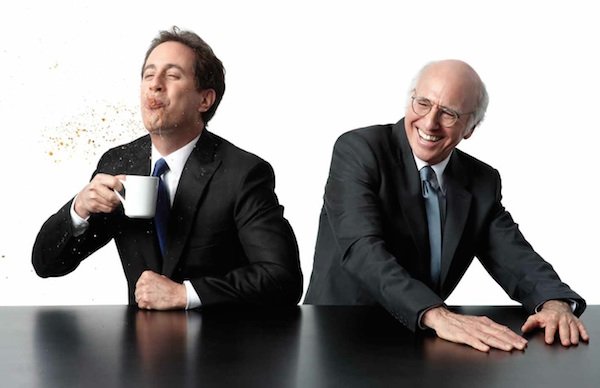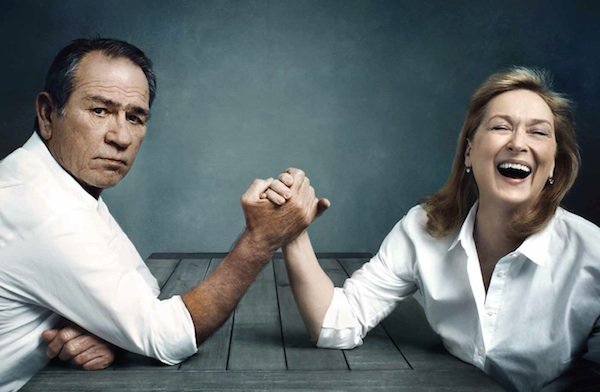Photographer Profile - Robert Trachtenberg: "It came down to a group of guys not taking themselves too seriously"

|
|
|
Robert Trachtenberg knows how to leave work at the office.
“I don’t walk around with a camera everywhere I go,” says the LA-based photographer. “My vacation photos are about it in terms of my personal work. The idea of traveling across the Southwest and doing a photo essay on rodeo people or something like that — that’s not for me.”
Trachtenberg is a successful commercial and editorial photographer who shoots celebrities — his work has appeared in Esquire, Vanity Fair, Entertainment Weekly, Rolling Stone, the New York Times Magazine and other publications, as well as in ad campaigns for NBC, CBS, ABC, TNT, TBS, Disney, MGM and HBO — and that seems to be all the self-identity he needs. “I’m a hired gun, and proud of it,” he says. His creative satisfaction, as he describes it, draws from that sense of professionalism.
“For me the fun of photography is getting to see the assistants and the hair and makeup people, this whole team, doing what they do,” he says. “I’m always trying to create something better and deeper than expected, and if I get that, it’s great, but that’s a byproduct of the process.”
During a recent interview with a reporter, Trachtenberg did not mention that he is also a filmmaker and student of Hollywood history. (Though to be honest, the reporter didn’t ask him about that sideline.) He has written and directed feature-length documentaries on the director George Cukor and the actor and filmmaker Gene Kelly for PBS and a film about Cary Grant for Turner Classic Movies. His PBS American Masters documentary Mel Brooks: Make a Noise earned him an Emmy.
He also wrote the book When I Knew, a collection of anecdotes from men and women recalling the moment they realized they were gay. Now he has brought out another book — this one a collection of his photographs — called Red Blooded American Male. In its foreword, which takes the shape of an irreverent Q&A with People magazine editorial director Jess Cagle, Trachtenberg calls it a “spiritual guide, a lifestyle guide, a DIY guide” for modern men.
“I was being completely tongue in cheek,” he says.

That same cheekiness runs throughout Trachtenberg’s conversation, and his photographs. His portraits are filled with cultural references and jokes that his subjects are happily in on. Of course, as he notes in his book, “at this point in our culture, everyone is in on the joke.”
On the other hand, when Trachtenberg began editing the photos for the book he discerned a broader theme running through them. “The idea of challenging or playing with conventional notions of masculinity seemed to be an unconscious theme in the work,” he says. “It came down to be a group of photos of guys not taking themselves too seriously.”
Tuck In Your Balls
Trachtenberg refers to the Hollywood of another era when describing his idea of what an authentic red-blooded American male is. “Take it back to Cary Grant or Jack Lemmon — they were confident in their masculinity. You don’t have to be a poser about it. You can show a lighter, funnier, more endearing side of yourself,” he says.
That’s the side he captures in his photographs: There’s Tommy Lee Jones arm wrestling Meryl Streep, Jerry Seinfeld doing a spit take with Larry David, Mark Wahlberg packed into a tiny Fiat with a load of kids, Stephen Colbert sewing an American flag, Bill Maher holding hands with a George W. Bush impersonator, and the cast of Jackass recreating photographer Herb Ritts's iconic 1989 photo of five nude supermodels draped over each other.
“Easily the most awkward direction I’ve ever had to give any group: ‘Please tuck in your balls,’” Trachtenberg writes in the photo’s caption.
He says that working in bookstores for years and thumbing though endless art and photography monographs helped prepare him for his future work. “[A]ll of that hopefully sticks in your head to draw from. It’s like a deep freezer you pull stuff out of and defrost as needed,” he notes in the book.



A Los Angeles native, Trachtenberg also worked for a period as the studio manager and in-house stylist for celebrity photographer Bonnie Schiffman. “I was playing all those
roles and watching a lot and learning a lot and eventually I realized I wanted to do this on my own,” he says.
Trachtenberg believes that a photographer’s subconscious guides his or her signature visual style. "I actually wish I had more of a style," he says. "To the extent that you can, you make the photo as timeless as possible. There are certain things you can do through the styling and lighting to ensure that the photo has a longer shelf life.”
As a hired gun, he gets paid to create and capture entertaining personas; capturing something authentic — his photographic byproduct — is a hard thing to do in Hollywood, he says.
“In the old days, a photographer could follow a celebrity around for a week or two and do a photo essay," he says. "Now you get 20 minutes or an hour, and your concepts have to be approved by the publicist, the magazine or both. What you get looks like it’s a real moment, but it’s not really.”
And everyone's already in on the joke.
Breaking the Mold
It can be done. Trachtenberg cites his portrait of Mel Brooks and Carl Reiner — two old, funny friends embracing — as one of the real moments he has captured. “But look who I was dealing with there — there was no vanity. It was beyond all that stuff,” he says.
He also shot some men for the book who aren’t celebrities. One was Cameron Kerr, a US Army veteran who lost a leg in Afghanistan. Kerr’s own sense of humor put him in the news this summer, after Republican presidential candidate Donald Trump was presented with a Purple Heart by a veteran during a rally in Virginia. Trump gushed that he’d always wanted one of the medals, which are usually awarded to soldiers wounded or killed while serving in battle. Kerr launched a crowdfunding project to help Trump earn his medal the old-fashioned way.
“I wanted to photograph him differently from the way you usually see veterans with missing limbs,” says Trachtenberg. “They’re often glamorized, but I wanted to approach it with some humor, to create an image that showed how life goes on.”

Kerr liked that idea.
Trachtenberg first thought of photographing him getting a pedicure on his remaining leg. “Then he suggested another idea,” recalls the photographer. “He said that he often gets
together with buddies who’ve also lost legs, and that when they go drinking and kind of get going, they use their prosthetics as beer steins. And I said, ‘Well that’s much better
than a pedicure.’”
They went to a bar in New York and poured a pitcher of beer into Kerr’s prosthetic, and Trachtenberg got his shot of a red blooded American male.
“It was great to be able to break the mold of that kind of photograph with a little bit of dark humor,” he says.


